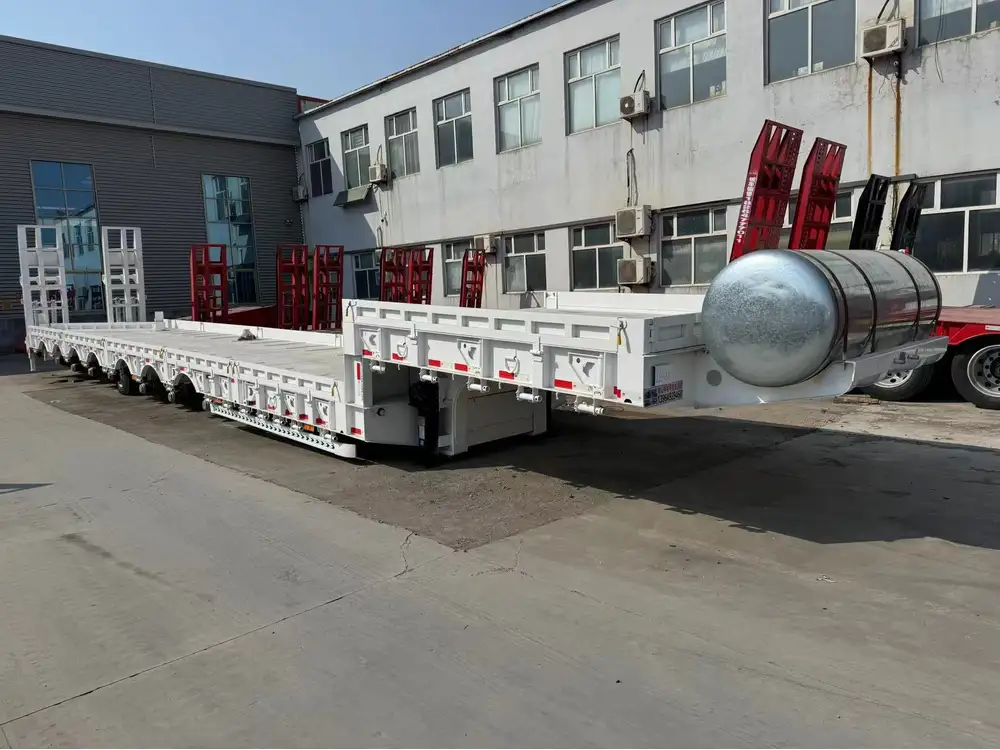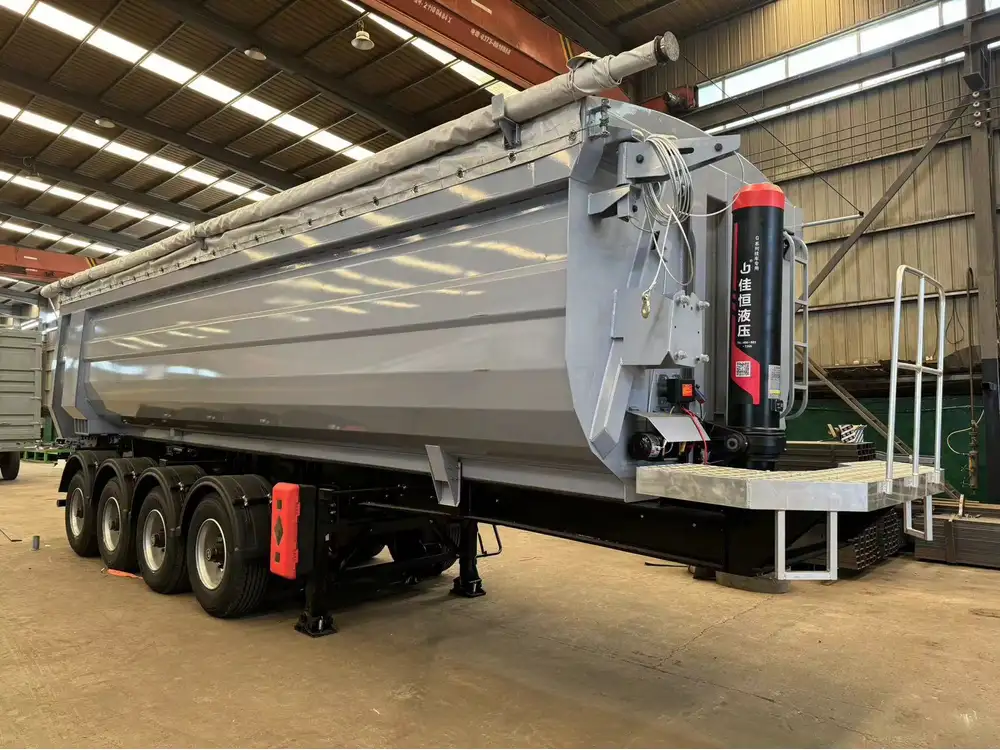Unloading a semi-trailer is an intricate process that demands attention to detail, safety, and efficiency. Understanding the mechanics behind unloading, especially with specific functionalities such as the jawbone system, enables operators to streamline their workflow, minimize risks, and enhance overall productivity. In this guide, we dive deep into the nuances, providing you with a structured approach to successfully log unloading a semi-trailer equipped with a jawbone mechanism.
The Importance of Safe Unloading Practices
Why Safety Matters
Unloading a semi-trailer is one of the most critical tasks within transportation and logistics. The consequences of improper unloading can lead not only to structural damage but can also pose significant safety risks to personnel involved. Loading docks can be bustling areas, with numerous movement dynamics—understanding these can mean the difference between a smooth operation and a costly mishap.

Common Risks in Unloading
- Injury from Falls: Unstable loads or improper weight distribution can lead to falls, resulting in injury.
- Equipment Mishaps: Improper handling of unloading equipment can cause damage to the semi-trailer or the goods inside.
- Environmental Hazards: Factors like slippery surfaces or inadequate lighting can exacerbate risks.
Understanding the Jawbone System
What Is a Jawbone System?
The jawbone unloading system is a mechanical aid designed to facilitate the efficient unloading of cargo from semi-trailers. It comprises articulated arms and gripping mechanisms that provide stability during the unloading process. This system is especially beneficial for large or heavy freight, where manual labor may not suffice or be safe.

Components of the Jawbone Unloading System
| Component | Description |
|---|---|
| Gripping Mechanism | Holds loads securely during transit and unloading. |
| Articulated Arms | Provides mobility and flexibility in maneuvering cargo. |
| Control System | Operates the gripping mechanism and gears efficiently. |
Advantages of Using a Jawbone System
- Enhanced Stability: The grip prevents cargo from shifting, which is vital in maintaining balance.
- Reduced Labor Costs: Automated systems can lower the required manpower, optimizing resource allocation.
- Increased Efficiency: Speeds up the unloading process, reducing wait times and operational delays.
Step-by-Step Guide to Log Unloading a Semi-Trailer with a Jawbone System

Pre-Unloading Preparation
- Inspect the Equipment: Conduct a thorough safety check of the jawbone system ensuring all components are functional.
- Appraise Load Stability: Analyze the cargo’s distribution within the trailer. Ensure no items are precariously stacked.
- Review Safety Protocols: Ensure that all personnel involved are aware of safety measures that need to be taken.
Unloading Process
1. Positioning the Semi-Trailer
- Ensure the trailer is properly aligned with the unloading dock.
- Activate the trailer’s brakes to prevent movement during unloading.

2. Initiate the Jawbone System
- Deploy the jawbone arms to the required position.
- Make sure the gripping mechanisms are operational.
3. Engage the Cargo
- Slowly and carefully close the jawbone grips around the cargo.
- Monitor for any signs of slippage or instability.
4. Lift and Transfer
- Gradually lift the load using the articulated arms.
- Move the cargo horizontally towards the unloading area, maintaining a steady pace.

5. Release the Cargo
- Once in the designated area, gently lower the arms.
- Release the grip on the cargo, ensuring it is stable before detaching completely.
Post-Unloading Check
- Conduct a thorough inspection of the jawbone system post-use to identify any wear or potential issues.
- Document any malfunctions or irregularities encountered during unloading for follow-up or repairs.
Managing Common Issues During Unloading

Load Imbalance
- Symptoms: Difficulty lifting, unexpected tilting of the cargo.
- Solutions: Always assess load distribution before starting. If imbalance occurs, reassess grip positioning or restart the unloading process.
Equipment Malfunctions
- Symptoms: Unresponsive arms or grips that fail to engage.
- Solutions: Regular maintenance checks and immediate reporting of issues to technical support prior to the next use.
Personnel Safety
- Symptoms: Graphic incidents or near misses during the unloading process.
- Solutions: Continuous training and drills on safety protocols for employees.

Innovations in Semi-Trailer Unloading
Emerging Technologies
With the rapid advancement in technology, the semi-trailer unloading sector is witnessing revolutionary changes that enhance safety and efficiency.
1. Automated Jawbone Systems
- These systems leverage artificial intelligence and robotics to perform intricate unloading tasks with minimal human intervention. Not only do they increase safety, but they significantly improve unloading speed.

2. Real-time Monitoring Systems
- Integrated systems that provide live feedback on load stability and equipment performance enhance operational oversight, reducing the likelihood of mishaps.
3. Advanced Training Simulators
- Virtual reality training programs allow personnel to practice unloading techniques in a risk-free environment, promoting skill retention and safety awareness.
Best Practices for Efficient Unloading

Regular Training Sessions
Invest in continual training for staff involved in unloading operations to keep them abreast of the latest techniques and safety protocols. Implement hands-on training sessions to address potential issues in a controlled environment.
Scheduled Maintenance
Create a timetable for systematic inspections and maintenance of unloading equipment. Establishing a routine ensures that equipment remains functional, providing a safety net for operators.
Comprehensive Load Planning
Prior to unloading, assess the type and weight of the cargo. Planning the sequence of unloading based on the stability and weight will mitigate risks associated with an unstable load.

Conclusion
Mastering the unloading of a semi-trailer, particularly one equipped with a jawbone system, is essential for transporting goods safely and efficiently. The advantages of using such advanced systems are manifold, including enhanced safety, reduced labor costs, and increased operational efficiency. By following the guidelines laid out in this comprehensive guide, operators can navigate the complexities of unloading while minimizing risks and maximizing productivity. Through continuous training, technology adoption, and an unwavering commitment to safety, the unloading process can be transformed into a streamlined, error-free operation.
Invest in safety and efficiency today by implementing these best practices in your semi-trailer unloading operations.



